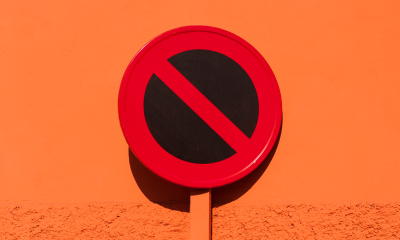Technology
Perseids meteor shower returns this weekend: how to see it


The
Perseid meteor shower peaks in mid-August.
Ethan Miller/Getty Image
-
Every year, the Perseids
meteor shower peaks in mid-August. -
The Perseids are known both for their epic “fireballs”
— explosions of light and color that last longer than those
from typical meteors —
and for their long, streaking tails. -
This year, the show will be particularly great, since
there’s a new moon August 11, meaning there’ll be practically
no moonlight to interfere with the show. -
The best time to watch will be on the night of August
12 and the early morning of August 13, especially in the
pre-dawn hours.
The Perseids
meteor
shower is often considered the most spectacular of the year,
and this summer’s show should be particularly excellent because
of the phase of the moon.
Every year, the Perseids light up the skies when Earth passes
through the debris tail of the Swift-Tuttle comet, which
travels a 133-year-orbit of the sun. Tiny bits from the comet
slam into our atmosphere, burning up in fiery, colorful streaks,
as
NASA explains.
The Perseids are known both for their epic “fireballs” —
explosions of light and color that last longer than those from
typical meteors — and for the long, streaking trails they leave
behind.
This year’s shower lasts from July 14 to August 24, but it
reaches its peak from 4 p.m. ET on August 12 through 4 a.m. ET on
August 13, according to
NASA JPL.
Because the moon enters a new phase on August 11, moonlight won’t
interfere with the celestial display. That means the meteors’
fireballs and tails should look spectacular on a practically
moonless night.
Watching the show
The Perseids are named after the constellation Perseus, which is
where the meteor shower’s colorful streaks appear to come from in
the night sky. But you don’t have to look that direction to see
the show — the meteors can appear anywhere in the sky overhead.
Depending on when you decide to watch, you’ll have a chance to
see something different. In the evening, starting around 10 p.m.,
you’ll see fewer meteors, but those that do appear will be
longer-lasting and tend to have longer tails.
The best time to see the most meteors according
to the American Meteor Society tends to be just before
dawn, around 4 a.m. local time. If you happen to have trouble
sleeping on Sunday night (August 12), that’s a perfect time to
step outside.
During the peak, it’s possible to count 50 to 100 meteors per
hour. But even if you can’t step outside a couple hours before
the sun comes up, it’s worth checking the sky in the late evening
and early morning. The days around the peak, especially August 11
and 13, also tend to have good viewing.
Since the Perseids always show up in August, they often coincide
with warm summer nights — perfect weather for viewing if you can
avoid rain or clouds and get to a dark spot. Enjoy the show.
-

 Business6 days ago
Business6 days agoConsumer Financial Protection Bureau fines BloomTech for false claims
-

 Business5 days ago
Business5 days agoLangdock raises $3M with General Catalyst to help businesses avoid vendor lock-in with LLMs
-

 Entertainment4 days ago
Entertainment4 days agoWhat Robert Durst did: Everything to know ahead of ‘The Jinx: Part 2’
-

 Business7 days ago
Business7 days agoKlarna credit card launches in the US as Swedish fintech grows its market presence
-

 Entertainment4 days ago
Entertainment4 days agoThis nova is on the verge of exploding. You could see it any day now.
-

 Business4 days ago
Business4 days agoIndia’s election overshadowed by the rise of online misinformation
-

 Business4 days ago
Business4 days agoCesiumAstro claims former exec spilled trade secrets to upstart competitor AnySignal
-

 Entertainment7 days ago
Entertainment7 days agoHow to set boundaries in the early stages of dating






















